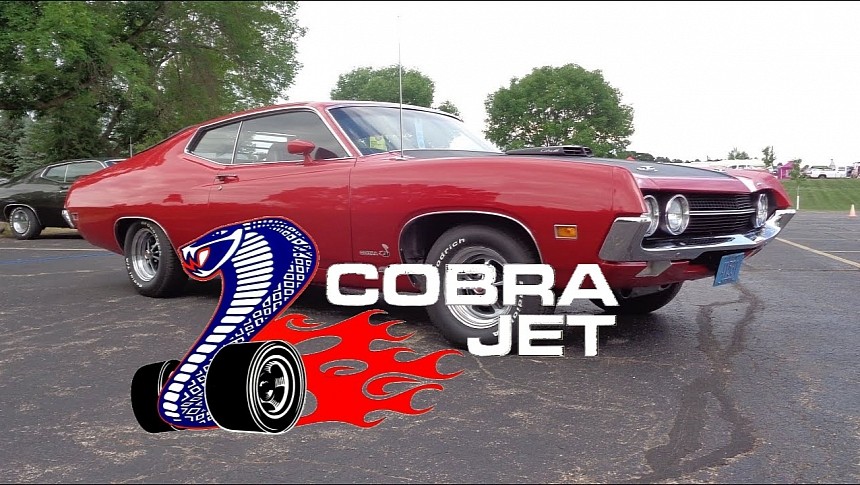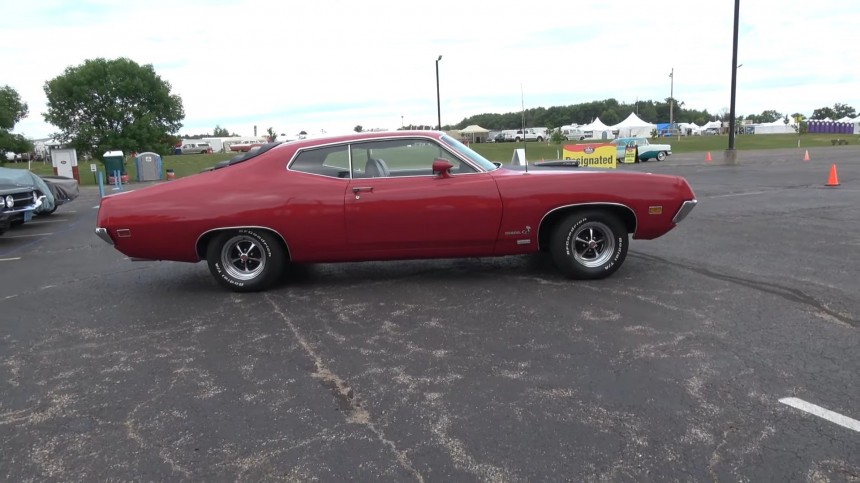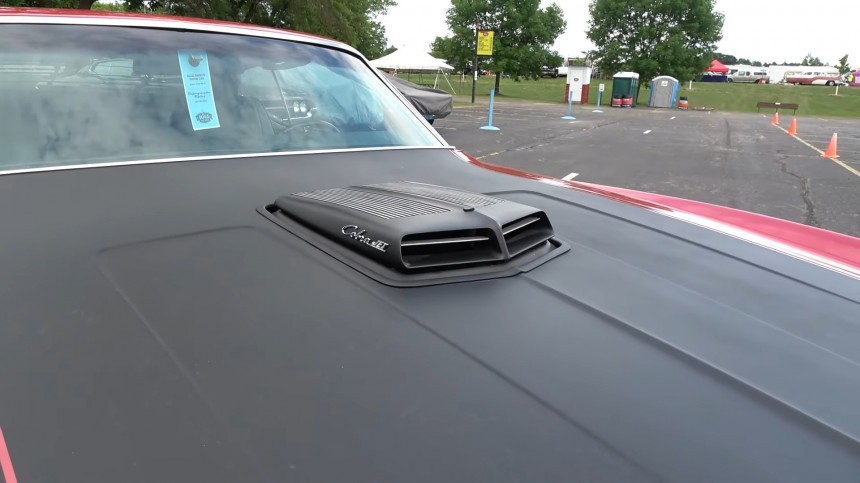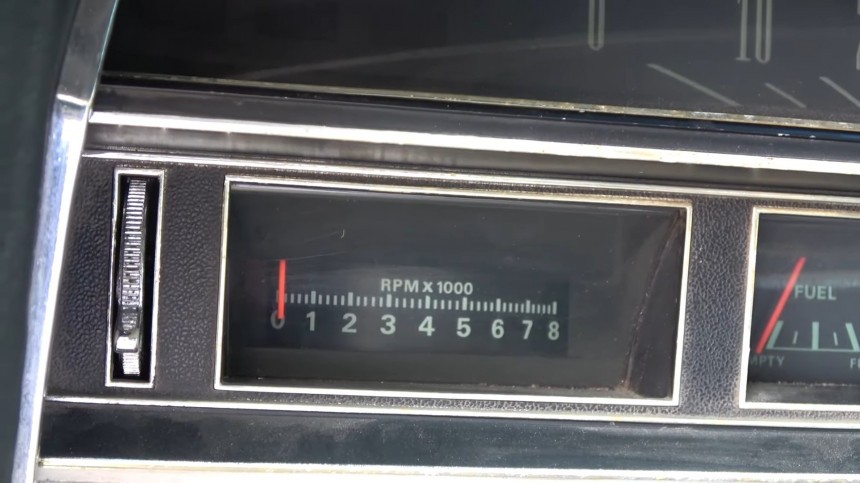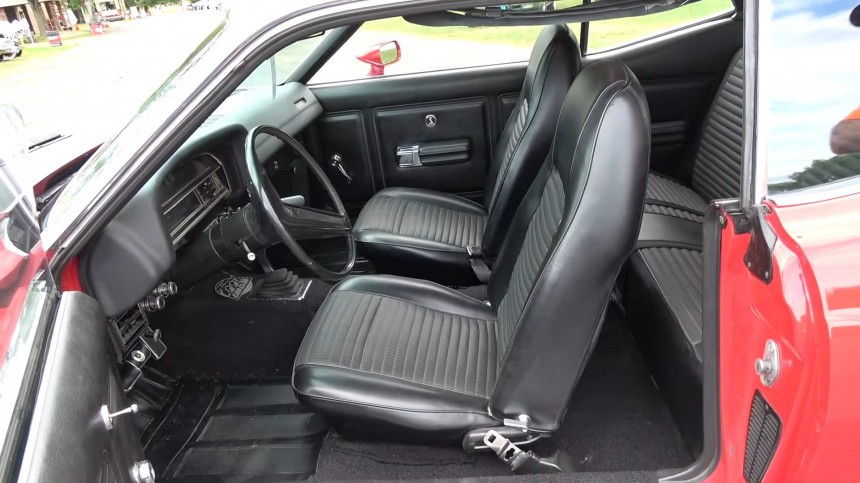The peak year of the Golden Age of Muscle cars was riddled with puzzles and mildly held-back allegations that gearheads reading official sales literature had to navigate through to make an educated buying decision. The detective work was especially handy when performance cars were the main concern of a discerning customer since street and strip reality were nowhere near the manufacturers' claims. Perhaps the biggest white lie of 1970 was the Ford Torino Cobra, a sleeper with enough muscle to kick the drag strip out of pretty much any rival.
In 1970, the holy trinity of Detroit was about to sign the documents of surrender in the Horsepower Wars, but in the underworld of the spy game battlefront, the hounds of hell were biting hard. Carmakers were about done with skyrocketing engine displacements and power and torque ratings. Still, they were now joining forces against a common foe who was viciously haunting their muscle cars like a foretelling specter of the Malaises to come.
The insurance companies were doing a pretty good job at making sale brochures look ridiculously communist when reading the output sections. Since premiums were aimed primarily at performance figures, manufacturers were understating their cars’ top-end specs to keep collateral costs down and generate showroom traffic. In 1970, Ford Motor Company introduced its new snake, the 429-CID (seven liters) big-block, replacing the tried and tested 428.
The new engine was disappointingly sluggish on paper, but this practice wasn’t unfamiliar to anyone. Remember, for instance, that the equally-displacing Boss 429 (which came out in ‘69) was allegedly good for only 375 hp (380 PS). Right – if only gearheads believed that. Ford’s literature might have spoken the truth – if the mechanics would have stopped counting their horses after the first six cylinders.
Similarly, the other legendary Blue Oval motor, the iconic 429 Cobra Jet from 1970, received the 370-hp high praise from the copywriters. Somehow, Ford pointed the finger at the insurers (we won’t specify which of the four fingers it was) while spilling the beans of its V8 masterpiece by detailing the other goodies. Combined, those specifications made the stated power score grow a trunk, a pair of tusks, change color to white, and stand in the middle of the room.
Let’s take a look at one example from that marvelous year: a Ford-built, Italian-named product – a high-power one, at that – had the following official specifications: “429-cu. in. V-8-360 hp: 4.36" bore x 3.59" stroke: 10.5 to 1 comp. ratio; prem, fuel; 4-bbl. carb.; auto. choke; canted self-adj. valves; oil cap'y, incl. filter, 5 qt.”
Okay, maybe copywriters and marketing guys were print-pressed and didn’t have a whole lot of paper real estate at their disposal to speak proper English. Hence, they retorted to piston-head-ese. Translated into human, the above means this: “429 cubic-inch V8 (7.0 liters) with 360 horsepower, cylinder bore: 4.36 inches (110.744 mm), piston stroke: 3.59 inches (91.186 mm); 10.5:1 compression ratio; it burns premium fuel, has a four-barrel carburetor, automatic choke, the canted valves are self-adjusting, and the motor requires five quarts – 4.73 liters – of oil (including the filter capacity).
Fine, let’s take the presumption of innocence and admit that the above is true. But take a look at the following two gems. “429-cu. in. V-8 Cobra-370 hp; 4.36" bore x 3.59" stroke: 11.3 to 1 comp. ratio; premium fuel: 4-bbl. carb.; auto. choke; canted self-adjusting valves; oil capacity, including filter, 5 qt.” And “429-cu, in. Cobra Jet V-8-370 hp; 4.36" bore x 3.59" stroke: 11.3 to 1 comp. ratio; prem. fuel; 4-bbl. carb.; auto. choke; canted self-adj. valves; oil cap'y, incl. filter, 5 qt.: Shaker Hood Scoop.”
Following this bureaucratic – and highly propagandistic – logic, boosting the compression from 10.5 to 11.3 resulted in a gain of 10 horsepower (ten, as in as many fingers and thumbs on both hands). For abs-cramping laughs, consider that the 480 lb-ft (651 Nm) of torque in the standard 429 was reportedly choked in the Cobra and Cobra Jet (450 lb-ft, or 610 Nm). Add a cold air grabber, and you get nothing. Nothing at all! Net zero. Indeed, Ford’s advertisers had a venomous sense of humor, and they were cynically laughing FoMoCo’s tailpipes off about those insurance companies and their Dark-Ages-inspired taxes on tire-smokin’ fun.
No, there is no way in heaven (or in that internal combustion place at the other end of religion) that the big-block V8 would produce that low-muscle car power. And a couple of die-hard Ford fans would defend this statement down to its four-speed core. They are Randy Tesmer and his son Christopher, and they own the Red Ford Torino Cobra Jet in the video. Tesmer Sr. acquired the car in 1991 almost by accident (or should we say by chance?) since he was looking for a Mustang.
In his defense, he did want to buy a new Torino back when the 1970 model was new but didn’t have the money. His example cost $3,802 when it was sold to its original owner, and the relatively low price can be explained by the buyer’s parsimonious choice of optional extras. The customer ordered just four add-ons: power front disc brakes, power steering, high-back bucket seats, and the Cobra Jet V8. $532 on top of the car’s base price of $3,270.
Apart from the close-ratio four-speed manual transmission – coupled to the standard 3.50:1 conventional rear – the only cool option on this car is its tachometer gauge (see it in the gallery). Well, the car itself is cool enough since it’s one of the 2,131 Torino Cobra Jets with three pedals built for the model year. Out of the total production of Ford Torino – over 429,000 units – the air-grabbing high-performance examples are a rarity – especially when looking as impeccable as our hero.
The two men don’t tell if their car is restored or if the engine is still original to the car, but the odometer shows 1,321 miles (2,125 metric clicks). Whether that’s after a rollover or following a rebuild/swap job, it doesn’t make any difference to them from the smiles-per-gallon point of view.
The Torino almost became a superstar of the automotive universe when it made the short list of proposed names for a model launched in 1964 with a galloping horse on the front grille. Who knows what might have become of the pony cars had they been named after an Italian city (Torino is the Italian name of Turin)? Since the Mustang took first place, the name was archived for later use, and its time came in 1968 when the intermediate Fairlane received a high-end sub-variant.
The spin-off proved so popular that in 1970, Ford switched places, making the Torino the mainstay and the Fairlane its subsiding iteration. A year later, the Fairlane was axed, leaving only Torino to rule supreme in the intermediate lineup of Ford automobiles. The nameplate lasted until 1976, spanning three generations, and the Cobra and Cobra Jet engines were a two-year build. Coinciding with the Torino’s second generation, the two performance V8s saw action only in 1970 and 1971. After that, the feds stepped in and gutted performance for more than two decades when the emissions boogie man crept into the closets of carmakers big and small.
The Torino made the Motor Trend Car of the Year in 1970, mainly due to its Cobra V8s and redesigned heads, larger valves and ports, high-lift cams, dual header-type exhausts, and high-riser manifolds. The apex predator in the Torino muscle territory was Drag Pack, with a No-spin 4.30: 1 differential, engine oil radiator, forged aluminum pistons, and 4-bolt center main caps. In the February issue of the awarding magazine, a Torino Cobra with a four-speed box and 3.91 gears claimed 5.8 seconds from 0-60 mph (97 kph) and 13.99 seconds in the quarter mile with a speed of 101 mph (162 kph). Not bad times for a 3,935-lb SportsRoof (curb weight) automobile (1.8 tons) – the heaviest of the entire 1970 Torino lineup.
The insurance companies were doing a pretty good job at making sale brochures look ridiculously communist when reading the output sections. Since premiums were aimed primarily at performance figures, manufacturers were understating their cars’ top-end specs to keep collateral costs down and generate showroom traffic. In 1970, Ford Motor Company introduced its new snake, the 429-CID (seven liters) big-block, replacing the tried and tested 428.
The new engine was disappointingly sluggish on paper, but this practice wasn’t unfamiliar to anyone. Remember, for instance, that the equally-displacing Boss 429 (which came out in ‘69) was allegedly good for only 375 hp (380 PS). Right – if only gearheads believed that. Ford’s literature might have spoken the truth – if the mechanics would have stopped counting their horses after the first six cylinders.
Let’s take a look at one example from that marvelous year: a Ford-built, Italian-named product – a high-power one, at that – had the following official specifications: “429-cu. in. V-8-360 hp: 4.36" bore x 3.59" stroke: 10.5 to 1 comp. ratio; prem, fuel; 4-bbl. carb.; auto. choke; canted self-adj. valves; oil cap'y, incl. filter, 5 qt.”
Okay, maybe copywriters and marketing guys were print-pressed and didn’t have a whole lot of paper real estate at their disposal to speak proper English. Hence, they retorted to piston-head-ese. Translated into human, the above means this: “429 cubic-inch V8 (7.0 liters) with 360 horsepower, cylinder bore: 4.36 inches (110.744 mm), piston stroke: 3.59 inches (91.186 mm); 10.5:1 compression ratio; it burns premium fuel, has a four-barrel carburetor, automatic choke, the canted valves are self-adjusting, and the motor requires five quarts – 4.73 liters – of oil (including the filter capacity).
Fine, let’s take the presumption of innocence and admit that the above is true. But take a look at the following two gems. “429-cu. in. V-8 Cobra-370 hp; 4.36" bore x 3.59" stroke: 11.3 to 1 comp. ratio; premium fuel: 4-bbl. carb.; auto. choke; canted self-adjusting valves; oil capacity, including filter, 5 qt.” And “429-cu, in. Cobra Jet V-8-370 hp; 4.36" bore x 3.59" stroke: 11.3 to 1 comp. ratio; prem. fuel; 4-bbl. carb.; auto. choke; canted self-adj. valves; oil cap'y, incl. filter, 5 qt.: Shaker Hood Scoop.”
No, there is no way in heaven (or in that internal combustion place at the other end of religion) that the big-block V8 would produce that low-muscle car power. And a couple of die-hard Ford fans would defend this statement down to its four-speed core. They are Randy Tesmer and his son Christopher, and they own the Red Ford Torino Cobra Jet in the video. Tesmer Sr. acquired the car in 1991 almost by accident (or should we say by chance?) since he was looking for a Mustang.
In his defense, he did want to buy a new Torino back when the 1970 model was new but didn’t have the money. His example cost $3,802 when it was sold to its original owner, and the relatively low price can be explained by the buyer’s parsimonious choice of optional extras. The customer ordered just four add-ons: power front disc brakes, power steering, high-back bucket seats, and the Cobra Jet V8. $532 on top of the car’s base price of $3,270.
The two men don’t tell if their car is restored or if the engine is still original to the car, but the odometer shows 1,321 miles (2,125 metric clicks). Whether that’s after a rollover or following a rebuild/swap job, it doesn’t make any difference to them from the smiles-per-gallon point of view.
The Torino almost became a superstar of the automotive universe when it made the short list of proposed names for a model launched in 1964 with a galloping horse on the front grille. Who knows what might have become of the pony cars had they been named after an Italian city (Torino is the Italian name of Turin)? Since the Mustang took first place, the name was archived for later use, and its time came in 1968 when the intermediate Fairlane received a high-end sub-variant.
The Torino made the Motor Trend Car of the Year in 1970, mainly due to its Cobra V8s and redesigned heads, larger valves and ports, high-lift cams, dual header-type exhausts, and high-riser manifolds. The apex predator in the Torino muscle territory was Drag Pack, with a No-spin 4.30: 1 differential, engine oil radiator, forged aluminum pistons, and 4-bolt center main caps. In the February issue of the awarding magazine, a Torino Cobra with a four-speed box and 3.91 gears claimed 5.8 seconds from 0-60 mph (97 kph) and 13.99 seconds in the quarter mile with a speed of 101 mph (162 kph). Not bad times for a 3,935-lb SportsRoof (curb weight) automobile (1.8 tons) – the heaviest of the entire 1970 Torino lineup.
